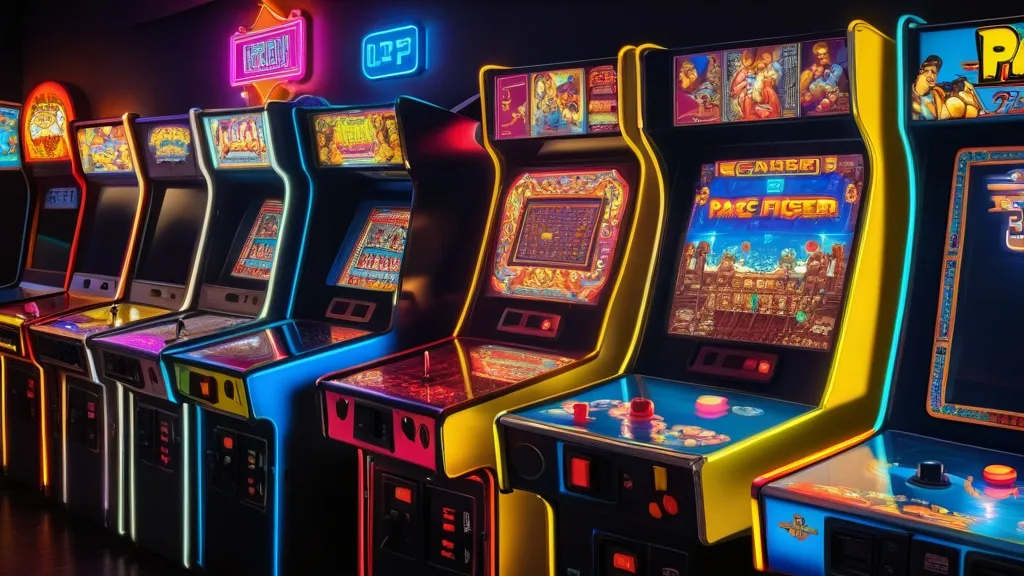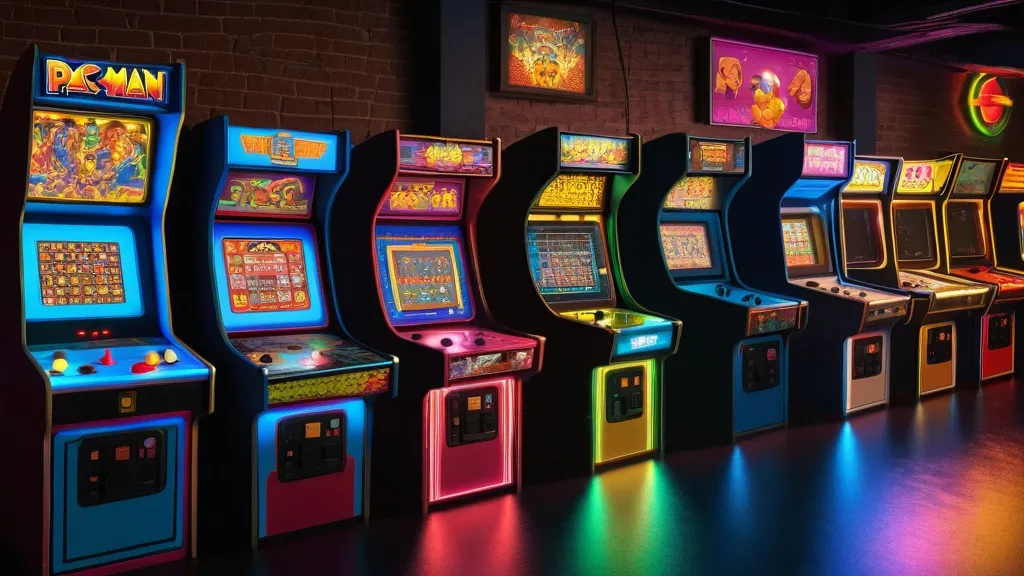As someone who’s been writing about cabinets, quarters, and high scores for 12+ years, here’s the quick answer you want: the best arcade games of all time are the ones that still make you feed a coin-op cabinet without blinking. I mean Pac-Man, Street Fighter II, Donkey Kong, Galaga, Space Invaders. The classics. Simple loops, tight controls, real risk. In my experience, those are the names that define classic arcade games, retro arcade gaming, beat ’em ups, shoot ’em ups—whatever label you slap on it.
And yes, I’m saying this like I’ve hauled a 200-pound cabinet up a staircase. Because I have. Twice. My rule: if a game still feels good on a sticky joystick and a chipped button, it’s timeless. You feel it in your hands before you feel it in your head.
My shortlist (no fluff, just the real hits)

- Pac-Man / Ms. Pac-Man — Simple maze, pure pressure. Still vicious.
- Space Invaders — That creeping dread. Those bleeps. It works.
- Galaga — The capture mechanic is genius. Risk equals firepower.
- Donkey Kong — Precision jumps, mean physics, loud barrels.
- Street Fighter II — Footsies. Mind games. The birth of “one more game.”
- Robotron: 2084 — Twin-stick chaos. Your thumbs will cry.
- NBA Jam — Shouting matches. Rubber-band rage. Pure party fuel.
- Time Crisis — Light gun drama and the pedal pop-out—chef’s kiss.
If you want longer lists, deep dives, and new picks I test all the time, I stash everything in my arcade games hub. I update that like a gremlin who found extra quarters.
Why these games hit so hard
I’ve always found that the best arcade designs are built on a loop you can explain in one breath. Move, avoid, hit the thing, chase score. That loop is everything. Presentation changes. Tech changes. The loop stays.
Second, controls. Arcade classics live and die by feel. Street Fighter II works because a single crouching medium kick has personality. Donkey Kong works because ladders and jumps have rhythm. Micro-movements matter. You can’t fake that with a splashy intro screen.
If you want the money angle, there’s a reason these cabinets ate pockets for decades. The highest-grossing arcade games list reads like a canon. Money doesn’t always equal quality, but in coin-op land, sustained quarters mean the loop sunk its teeth in.
Pillars that shaped the scene
Pac-Man and Ms. Pac-Man turned pattern reading into an art. I’ve watched people run routes like college football plays. No joke. Eerie how a maze can feel alive.
Space Invaders is the anxiety machine. That descending wave—pure sound design evil. Every shot feels like you’re bailing out a sinking boat with a thimble.
Galaga, though. The capture mechanic is so mean it’s brilliant. “Do I risk getting stolen to power up?” Yes. Of course you do. And then you lose both ships and pretend you meant to.
Donkey Kong is the platformer boot camp. Hitboxes that don’t lie. Ladders that will betray you. I’ve lost lives within pixels because I got cocky. It keeps you honest.
Street Fighter II turned human psychology into a sport. Whiff punish. Counter-poke. Throw loops. If you think it’s button mashing, I will happily introduce you to a humble 2–0.
Robotron: 2084 is twin-stick poetry. Move with one stick, aim with the other, try not to scream. I swear you can feel your brain rewire on wave three.
NBA Jam is less basketball, more social experiment. Your friend will deny the rubber-band AI exists. Then scream when your half-court dunk gets goaltended by the laws of physics.
Modern love letters to old-school chaos
People think arcade spirit is gone. Nah. Modern indies keep the flame sharp. Case in point: Neon Turf Wars, a cyberpunk twin-stick arcade brawler riffs on classic twin-stick control but adds style, territory control, and neon that could blind a mule. It’s proof the loop still sings.
Fighting games: why character design matters
What I think is underrated: readable silhouettes, iconic moves, and stage vibes that stick in your head. I’ve dug into this from the arcade era to modern tourneys—here’s a piece that breaks down how mascots became main events: arcade icons to fighting games. Short version: character clarity is gameplay clarity.
The World Video Game Hall of Fame has been canonizing what I’ve been screaming for years: simple loops with strong identity last forever. When a game hits that sweet spot, it snowballs into legend.
Strategy in pixels (yes, arcades had brainy games)
I’m not saying every cabinet was a ballet of thought, but the best ones made you choose in a blink. Risk or safety. Save your bomb or flex for score. If you’re into retro-meets-tactics experiments, check out these pixel battle games that pull strategy into quick-hit loops. Feels old-school and new-school at once.
2D forever (gravity, jump arcs, and tasty pain)
Side-scrollers trained me to respect momentum. The jump arc is a contract. Break it, and players feel cheated. If you want a nostalgia tour that actually explains why these games worked, I rounded up iconic 2D games that defined generations. Spoiler: it’s the timing, not the pixels.
Want the long list? Start here
When folks ask me to rank the pantheon, I point them to my running notes and case studies in the arcade games archive. It’s my lab. I toss in score tips, cabinet quirks, and which stick gates will make you swear.
Mini guides inside the guide

Which cabinets teach real skill fast?
- Galaga — Teaches risk management and precision fire.
- Donkey Kong — Teaches timing, patience, ladder baiting.
- Street Fighter II — Teaches spacing, counters, and mental stack.
- Robotron: 2084 — Teaches aim/movement split-brain control.
Which ones eat quarters the fastest?
- Space Invaders — Early difficulty ramp is brutal by design.
- Time Crisis — Miss a step, pay the price. Literally.
- Any beat ’em up with a cheap boss — Looking at you, quarter-munchers.
How I judge a “perfect” arcade loop
- One-sentence goal — If I need a manual, it’s not arcade-tight.
- Immediate feedback — Hit, miss, ding, danger. No delay.
- Skill ceiling — I can see the next plateau and chase it.
- Risk-reward — More danger equals better score or power.
If you want to see modern riffs on those old rules, I put some of my experiments and picks here: pixel battle games. It’s less nostalgia, more design nerdery.
Quick cheat sheet (who to play, what you learn)
- Pac-Man — Pattern reading; route optimization under pressure.
- Ms. Pac-Man — Anti-pattern chaos; faster, meaner mazes.
- Space Invaders — Pressure control; last-alien speed trap.
- Galaga — Risk stacking; capture gambles; two-ship flow.
- Donkey Kong — Platform discipline; jump arcs; ladder baiting.
- Street Fighter II — Footsies; frame traps; punish windows.
- Robotron: 2084 — Split aiming; crowd triage; panic management.
- NBA Jam — Momentum reads; team spacing; tilt control.
Design details that still blow my mind
- Galaga’s capture isn’t a gimmick; it’s a philosophy. Want power? Risk everything.
- Street Fighter II’s sound cues are spacing tools. Fireball audio sets timing.
- Donkey Kong’s barrels are “dice” you can influence. Not random. Not fair either.
- Pac-Man’s ghosts have rules, not luck. Learn them, break the maze.
If you’re curious how critics try to frame the canon, here’s a primer-style roundup that tracks cultural picks and lists across decades: video games considered the best. I don’t agree with everything (shocker), but it’s a good map.
Arcade DNA in modern indie games
I keep seeing smart takes on the old heartbeat. Small loops, sharp feedback, skill that feels earned. It’s why a new twin-stick or a clean platformer can hit like 1982 all over again. You don’t need a live service to make a great game. You need a loop.
The three tests I use
- Would I teach this to my kid in under 60 seconds?
- Could I play this with a busted button and still smile?
- If my last quarter’s on the line, do I pick it again?
When I say “the best arcade games of all time,” I’m not chasing nostalgia points. I’m chasing the games that pass those tests. The ones we still crowd around. The ones that make even a fifth grader instantly get it—then get hooked.
Character, cabinet, crowd
Arcade greatness isn’t a solo story. It’s the cabinet art pulling you in. The booming attract mode yelling from across the room. The tiny audience forming behind you two rounds into SFII. I’ve watched strangers become friends over a shared loss to a cheap boss. That’s the magic.
If you want to nerd out on how fighting game silhouettes and arcade mascots shaped design, this breakdown is a fun rabbit hole: arcade icons to fighting games. Yes, I use it to win arguments. No, I’m not sorry.
One last lightning list (play these first)
- Beginner: Pac-Man, Galaga, NBA Jam
- Intermediate: Donkey Kong, Time Crisis, Ms. Pac-Man
- Advanced: Street Fighter II, Robotron: 2084
And if you’re on that nostalgia kick, go poke through these iconic 2D games. Some will surprise you with how modern they feel.
Anyway, I’ll probably keep arguing about the best arcade games of all time until my wrists give out. Someone’s got to keep the quarters honest.
FAQs
-
What’s the easiest classic to learn in five minutes?
Pac-Man. Move, eat dots, avoid ghosts. Easy to start, hard to master.
-
Why do people worship Street Fighter II so much?
Because it teaches spacing, timing, and reads better than 99% of games. It’s chess with fireballs.
-
Are modern games as good as the old cabinets?
Some are. If they nail the loop and the feel, they stand right next to the classics.
-
What’s a good first shmup (shoot ’em up)?
Galaga. Clean rules, smart risk-reward, and it still pops off.
-
Where can I read more about arcade history?
Start with Britannica’s overview and museum lists, then play the games. Touch the stick. That’s the history that matters.
Henry Wright: Celebrating the artistry of gaming. I cover Pixel Games, Indie Battles, Arcade Classics, Gaming Culture, and Visual Design. Let’s explore the pixels together!

Is there any scientific evidence supporting the benefits of disco yoga? Sounds like a fun way to exercise!